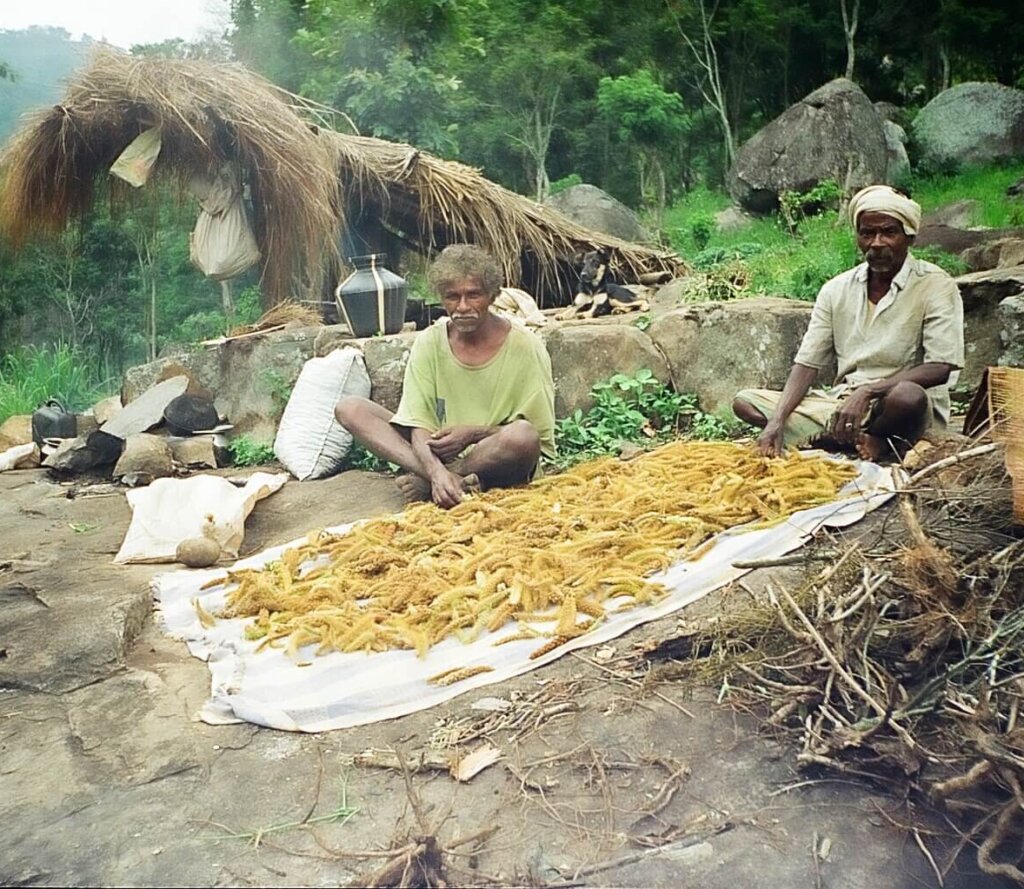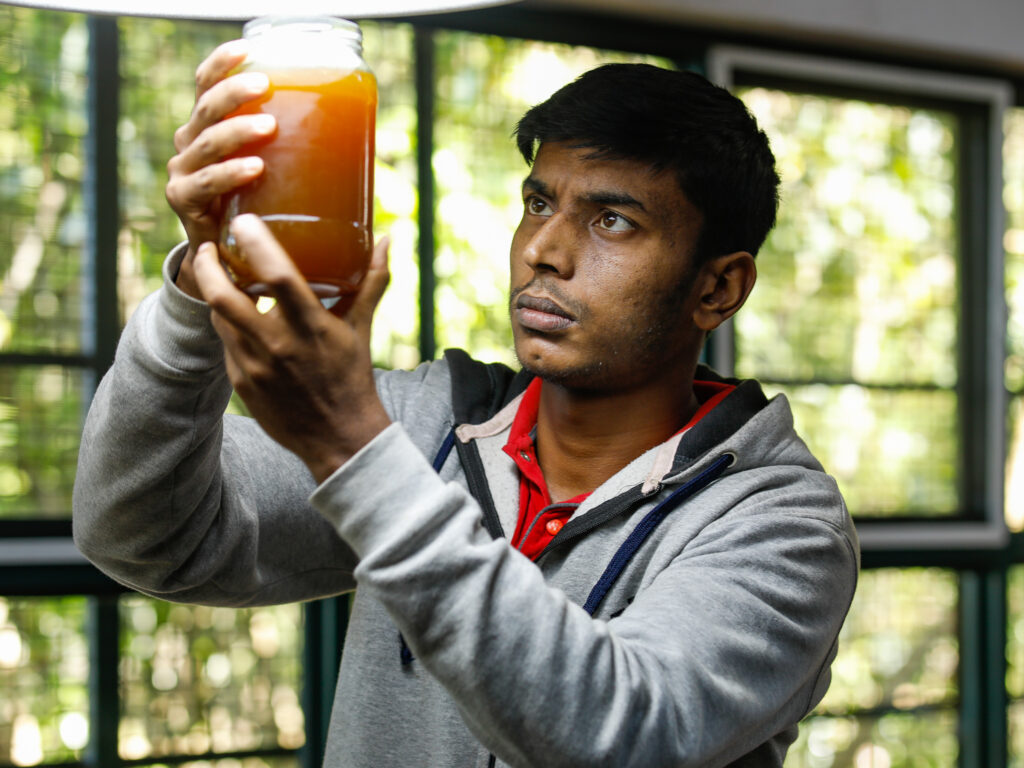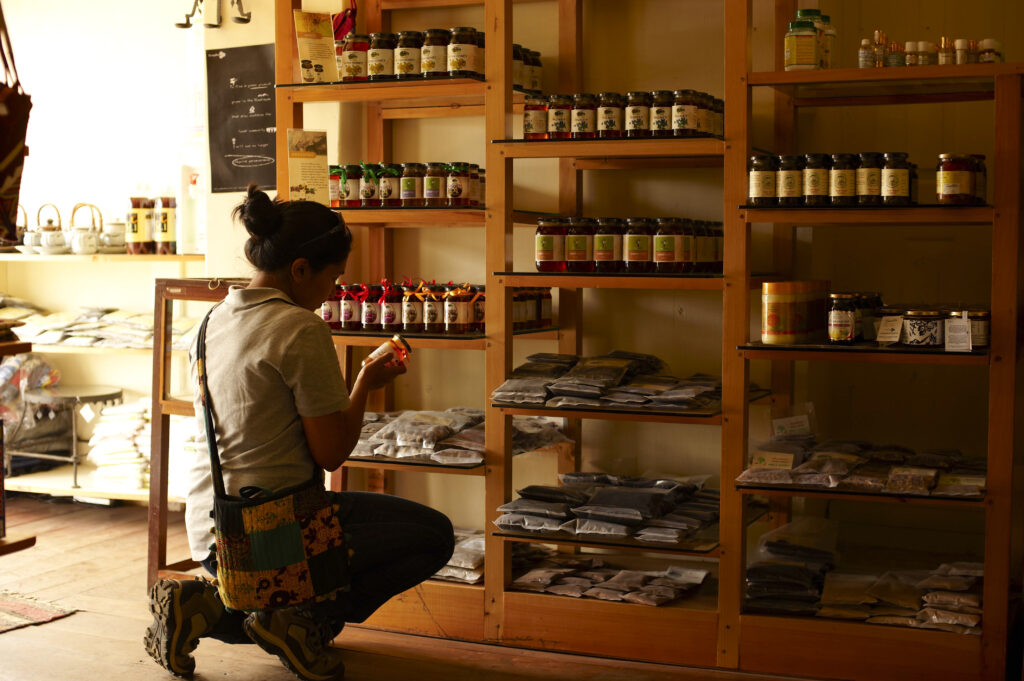creating sustainable institutional linkages
Our ecosystem is engineered on the premise of creating sustainable livelihood choices by connecting communities and markets. There is a circular network set up that sustains and supports each other. Our partner networks are linked in such a way that every interest such as those of the community/producer, customer, ecological sustenance, and external partners is accounted for. It is not sufficient to merely connect communities with markets, but to also ensure that market shocks do not have an adverse and unequal impact on the community, consumerism does not lead to destruction of biodiversity and most importantly technological advancements and know how reaches the community. Empowerment of communities occur when the members are placed in a position to dictate market prices and do not merely accept what is given by intermediaries. Our current set up as listed below brings out this idea of connecting communities to markets.

Keystone Foundation
Keystone was set up in the year 1993 as a non-governmental organisation working towards the upliftment of the indigenous community and conservation of biodiversity. The first ever survey on ‘honey hunters’ and ‘beekeepers’ was carried out by keystone. As the parent institution keystone over the years worked towards capacity building of indigenous communities to improve livelihood opportunities, educating communities to bridge the knowledge gap and collect, document and impart knowledge on conservation of biodiversity and pursuing sustainable methods of production. The foundation supports the most direct link with the communities.
Last
Forest

Set up as a private limited company in the year 2010, seeks to provide a link between indigenous community producers and the market. It is a social enterprise acting as the final marketplace that connects consumers with sustainable produce, harvested by the indigenous communities. Last Forest supports conscious consumerism and has a worldwide network of marketplaces. This helps connect indigenous produce with world movements that focus on sustainability such as the Fair trade and slow food movement. Many such movements are sought to be connected with indigenous communities in order to provide a space for such communities in the global sphere and spread information globally on local produce. Listed below are two partner organisations that connect Last Forest with the community producers and ensure that conservation of biodiversity is secured by promoting sustainable harvesting practices.

Nilgiris Natural
History Society
Wildlife enthusiasts often find themselves split between differing ideologies on conservation. Some believe that the presence of indigenous communities is harmful for biodiversity while others believe that indigenous communities can best protect biodiversity through their indigenous knowledge systems. The latter is believed and reinforced by the UN through the UN declaration on rights of indigenous peoples. NNHS incorporates this ideology and consists of people who believe in ecological societies where people and biodiversity co-exist is possible. NNHS does this through outreach programmes for communities on conservation of biodiversity, setting up of information centres to build capacity on adopting conservatory practices.




Aadhimalai Pazhangudinar

To empower the community and ensure that market prices are set by the producers while not being in a position of disadvantage, a Farmer Producer Organisation was set up under the Companies Act in the year 2013. As a producer organisation, Aadhimalai acts as an intermediary to procure forest produce from the communities where prices for such raw materials is fixed by the producers/stakeholders. The raw materials hence procured goes through a process of value addition at productions centres set up in indigenous villages, therefore involving the community in the whole production process. Around 1609 indigenous producers act as shareholders. Having production centres in tribal villages help for the involvement of tribal communities in the value addition process and reduce the burden of transportation of raw materials to production centres. These production centres are often set up in community owned buildings. A thorough capacity building exercise is carried out to train communities on value addition, procurement, and processing. Tangible and intangible assets such as research, finance, technology are provided by keystone. Products produced here are sent to Last Forest as the final marketing entity. More than 50 percent of Last Forest’s product procurement takes place from Aadhimalai.
FAQs about our ecosystem
Conservation, livelihoods and enterprise have been the foundation/pillars of Keystone’s ethos. As the enterprise efforts grew, Last Forest became an outcome of the evolutionary thought process. The enterprise was built around available produce from forests and homestead farms. Honey collection, processing and packaging became the core of this work.
Beeswax a wasted product became a gateway for producing an entire range of personal care products thereby ensuring income and employment opportunities for women in their own villages. Later this grew into an entire range of products.
Finally, in 2010 Last Forest acquired a legal identity which allowed this work to expand and stabilize. It remains crucial to understand that each institution plays a crucial role in ensuring a holistic approach to development. An enterprise and income generating stance which Last Forest has undertaken offers sustainability to the venture of working with conservation, biodiversity and livelihoods in the Nilgiri Biosphere Reserve.
The women of these communities were trained in the production of value-added beeswax products such as soaps, lip-balms and balms.
As the production of these products increased there soon came a demand for sales, resulting in the interspersion of Keystone’s livelihood work with business and markets. Sales are directly interlinked to livelihood sustainability; this ideology birthed the ecosystem that Last Forest is now a part of.
Eventually there came a time when Keystone as a registered trust could no longer be involved in a market driven approach, catapulting the separation of Last Forest from Keystone. The founders realised that to have an impactful presence there needed to be a three-part ecosystem consisting of a centralised organisation, production organ and business wing. These divided focuses needed attention from diverse teams ensuring that each of these motivations get the consideration they deserve.
The primary goals of the 3-part eco-system are meant to converge but the processes and approaches undertaken to achieve them have diverged.












